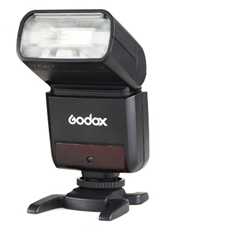Read any portrait photography tutorial
and I will bet that when discussing lenses it will say you need to use the
fastest lens, i.e. the lens with the widest maximum aperture you can find.
Shooting at wide apertures does enable you to blur the background by throwing
it out of focus however there are risks associated with shooting at very wide
apertures.
Many portrait photography articles
would have you believe you need lenses with maximum apertures of f1.2 or f1.4
to get the depth of field you need for a decent portrait but this simply isn’t
true. Lenses with an f1.2 aperture are damn expensive, and f1.4 lenses are very
expensive and to get the most out of these lenses you need to practice,
practice and then practice some more.
When shooting at apertures this wide the depth
of field could be too shallow leading to parts of the photo that should be
sharp a little soft. For example, shooting at these wide apertures often
results in soft noses, soft ears and soft hair. Stopping the lens down, and
narrowing the aperture a little will sort out all of these problems.
The depth of field using f1.8 and f2
lenses is sufficient to capture sharp portraits against a nicely blurred
background, and these apertures will ensure all facial features are sharp as
well as the hair. If you can get sufficient distance between the subject and
background you can get the same type of portraits using f4 lenses.
The learning curve with f1.8, f2 and f4
lenses isn’t any near as steep as with f1.2 and f1.4 lenses, and this is
something you need to consider when choosing a lens for portrait photography.
Canon
35mm f2 IS (full review here)
 |
| Focal Length – Full frame/APS-C:- 35mm/ 42mm/ Aperture:- 2 - 22/ Min focus:- 9.4"/ Dimensions:- 3.07" x 2.46"/ Weight:- 11.8oz/ Image stabilization:- Yes/ Price (approx.) $USD/£ GBP:-$550.00/£445.00 |
A mid-priced, mid-range 35mm prime lens
with image stabilisation. This lens is well built, has great image quality and
is capable of capturing photos that rival that of lenses costing several times
more.
For a quick honest and unbiased review, i.e. the pros and cons of the Canon 35mm f2 IS lens take a look at the following video clip, courtesy of Youtube.
YONGNUO 35MM F2 (full review here)
 |
Focal Length – Full frame/APS-C:- 35mm/56mm/
Aperture:- 2 - 22 /Min focus:- 9.8”/ Dimensions:- 2.9” X 2.3”/ Weight:- 5.4oz /
Image stabilization:- No / Price (approx.) $USD/£ GBP:- $90.00/£85.00
|
A budget and affordable 35mm prime
lens based around the Canon 35mm f2 lens. This lens isn’t as tough as the
Canon, and the image quality isn’t quite as good but then given the cost this lens
what can you expect? All things considered this is a great lens and gives a lot
of bang for the buck.
CANON EF 40MM F2.8 (full review here)
A tiny (and I mean tiny) pancake lens capable of capturing some awesome photos. The 40mm focal length may seem a little strange, but give it a go and I reckon you will be a convert. A great portrait lens that is well worth considering.
Below is a short clip explaining the pros and cons of the awesome Canon 40mm f2.8 STM lens.
Below is a short clip explaining the pros and cons of the awesome Canon 40mm f2.8 STM lens.
Canon’s budget nifty fifty has been on
the “must buy” list for several years now. The build quality is a little
suspect, it is a little soft wide open (but that’s not always a bad thing) but
it is capable of capturing some great photos.
YONGNUO 50MM F1.8
(full review here)
 |
Focal Length – Full frame/APS-C:- 50mm/80mm/ Aperture:- 1.8
- 22/Min focus:- 17.7”/ Dimensions:- 3.15” x 3.27”/ Weight:- 4.2oz/ Image
stabilization:- No/ Price (approx.) $USD/£ GBP:- $58.00/£40.00
|
A very cheap 50mm prime lens that is
equally as good as the Canon 50mm f1.8 lens, but a fraction of the cost. This
is a very capable portrait lens and one that is definitely worth considering.
Related
reading:
Below are some links to other portrait
photography related articles, posts and tutorials you may find
useful/interesting:-
- How to choose the right portrait lens
- Take care using wide angle lenses for portrait photography
- Why I use a zoom lens for portrait photography
- Best Canon fit zoom lenses for portrait photography
- Best Canon branded prime lenses for portrait photography
- Ultra-fast portrait lenses not needed all the time
- Lenses for family photography shoots
- Lenses for baby portrait photography
- The perfect lenses for outdoor infant portraits
Photography ramblings video playlist that may be of interest












